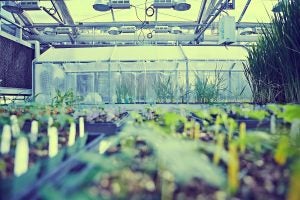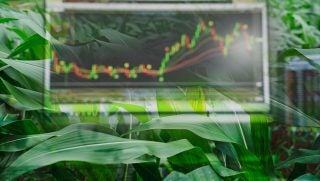Not long ago, I read an obit mourning the passing of a matriarch. She was fondly remembered as an icon and celebrity — one who witnessed the world unfold around her — for nearly two centuries.
That rules out America’s Golden Girl and sweetheart Betty White (besides, it’s well established that she’s immortal). This lady was of the green persuasion — the Old Apple Tree in Vancouver, Washington.
The landmark was so beloved by the public that a park was built around it. A yearly fall festival was also held every year to commemorate her. But why all this gushing sentiment over a fruit tree?
For one, it’s the foundational piece of an industry that persists to this day. Washington’s ag identity is deeply rooted in apples.
The Old Apple Tree’s bounty was green and bitter — not exactly eating quality, but great for baking. And according to genetic analysis by Washington State University’s Apple Genome Project, its lineage is unlike any other heirloom or modern variety. In fact, it’s the forerunner of modern heirloom varieties (themselves considered classics). The founder of a family dynasty.
That makes it a celebrity among apple experts, who revere it as a time capsule of sorts. A key to long-lost genetic diversity. In other words, breeding gold.
Fortunately, all is not lost with the tree’s passing. This story has a comic book ending. Like most prose of that type, there’s a big reveal — the protagonist really isn’t dead. The roots are still pushing up shoots called suckers, ensuring a steady stream of clonal mini-trees for future work.
While that’s an inspirational story, we have to frame it in a “so what” perspective.
Whatever the crop, plant breeders — using both classical and now molecular approaches — have never been timelier for food, economic, and environmental security. Their otherworldly powers are about taking the best (or more precisely, the most situationally desirable) attributes of multiple generations of parents and consolidating them in the offspring. In other words, the best of both worlds — all of their strengths, and (preferably) none of their weaknesses. For example, disease resistance, pest resistance, improved nutrition, and the ability to thrive in the most grueling environments — all wrapped in a tidy package.
On that last point: remember Isaias? The tongue twister hurricane that hit the East Coast a few weeks ago? Well, the winds whipped up seawater (our family farm is close to the ocean) and deposited it on our crops, burning everything in the process. Even windbreak trees were singed, dropping leaves like we fast-forwarded to fall.
As a farmer, you have to take it in stride. But as this was unfolding, I wondered how useful it would be to have salt tolerant crops. Consider a strategy: breed to exclude salt, or absorb, compartmentalize, and purge. Maybe take the classical approach — potential so elegantly exemplified by the Old Apple Tree. Draw on long lost genetic diversity in crop X to make some novel crosses; evaluate multiple generations of offspring to unveil the next big thing.
If your working pool of genetic diversity is lacking, create your own by using chemical mutagens and/or radiation. A number of conventional, as well as organic crops (ironically), have been developed this way.
Or maybe broaden your working pool by outsourcing DNA from other organisms. Perform a molecular cut and paste between different crops to get the job done, GMO style.
Admittedly, the salt tolerance angle is a bit self-centered and operation specific. It’s probably not a high situational priority in industry or the public sphere. How often does salt injury occur for our specific slate of crops? (Answer: Not often.) And what’s the payback for a niche crop like veggies? Of course, when private companies hesitate, public/private partnerships could be leveraged to share information and possibly develop public freebie varieties.

But what’s the general outlook for the profession from a sustainability standpoint — more mouths to feed, less land to do it on (due to urbanization and desertification), and increasingly hostile environments exacerbated by climate change?
Ironically, with all the talk about genetic bottlenecks and the need to diversify breeding stock, a WSU study suggests that plant breeders themselves are an imperiled species. The timing couldn’t be worse.
A national survey estimated a significant decline in full time equivalent program leaders (-21.4%) and support (-17.7%) personnel at the USDA and land grant universities. A predicted wave of retirements also looms ominously, with 1/3 of programs leaders over the age of 60.
Who’s going to replace their cohort? The one responsible for monumental gains in food production? It’s not like pests and pathogens are going to submit in the never-ending battle for field supremacy. They’re constantly adapting to any tactics we use. Also consider the challenges posed by non-living factors (climate instability), or social impacts (poor crop nutrition).
Whatever the downrange scenario, we need to position ourselves aggressively. All of these ills are correctable, but it’ll take significant investment in capital — both human and physical — and political will. In particular, breeding programs necessitate long-term, sustained funding to get a program established. And even then, the dividends may not be apparent for years. It’s a hard sell.
Yet in an era punctuated by uncertainty, plant breeding has always been central to our sustainability aims. Norman Borlaug — a plant breeder — spearheaded the Green Revolution. I have no doubt that his heir apparents are eager to continue his legacy.
Tim Durham’s family operates Deer Run Farm — a truck (vegetable) farm on Long Island, New York. As a columnist and agvocate, he counters heated rhetoric with sensible facts. Tim has a degree in plant medicine and is an Associate Professor at Ferrum College in Virginia.



